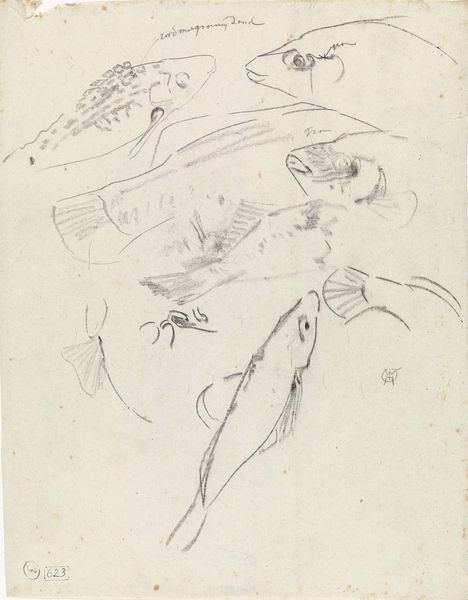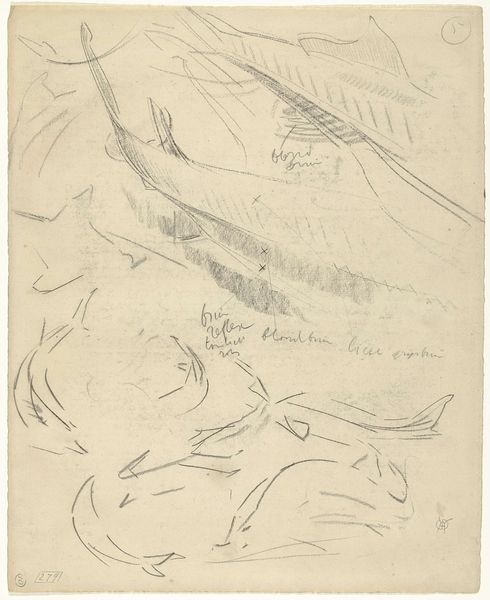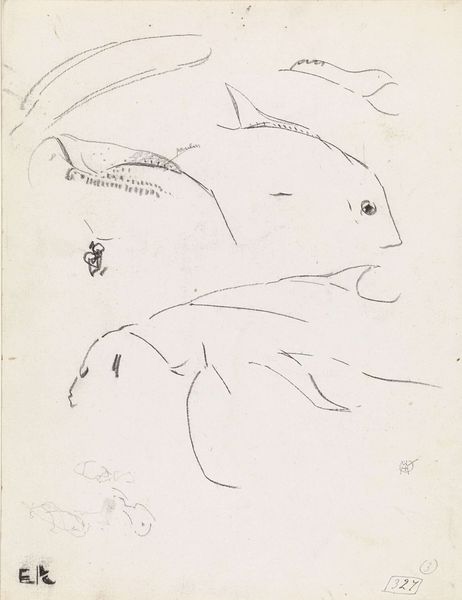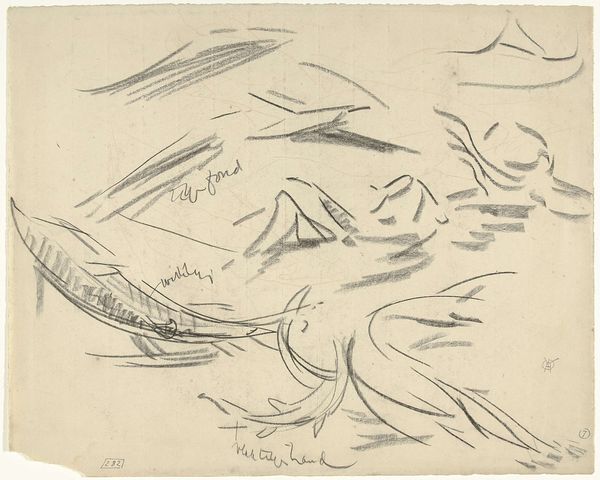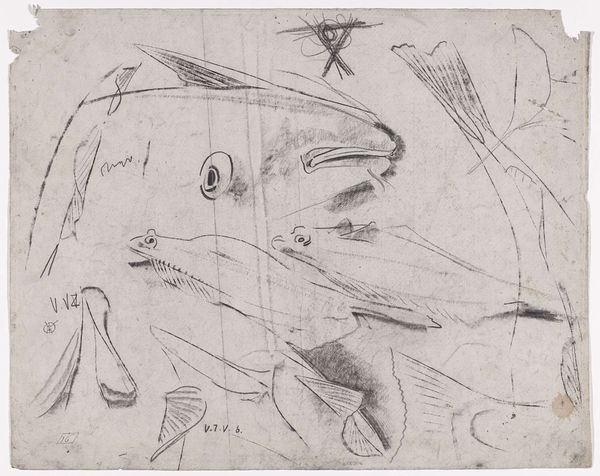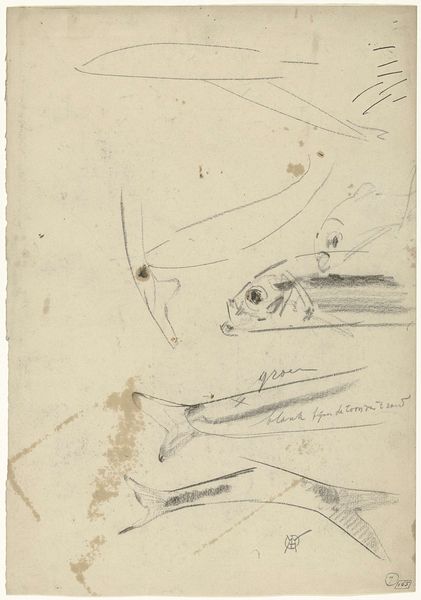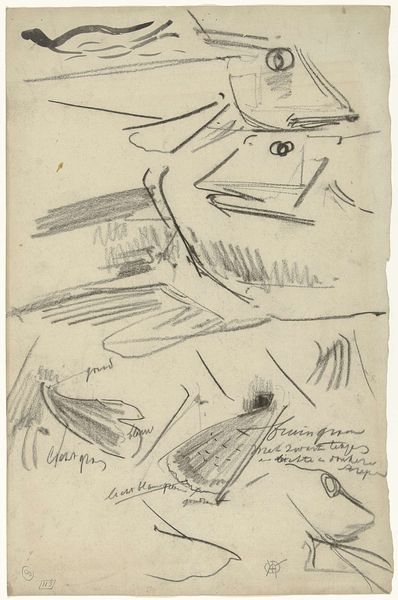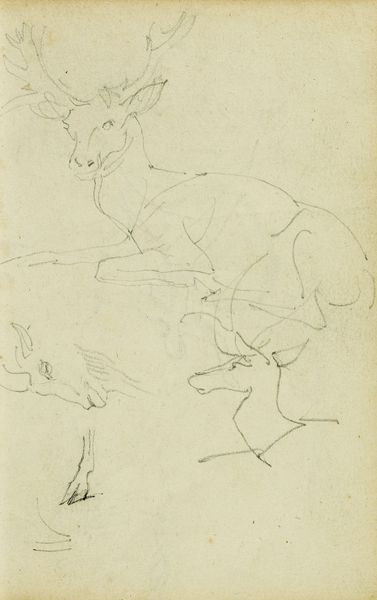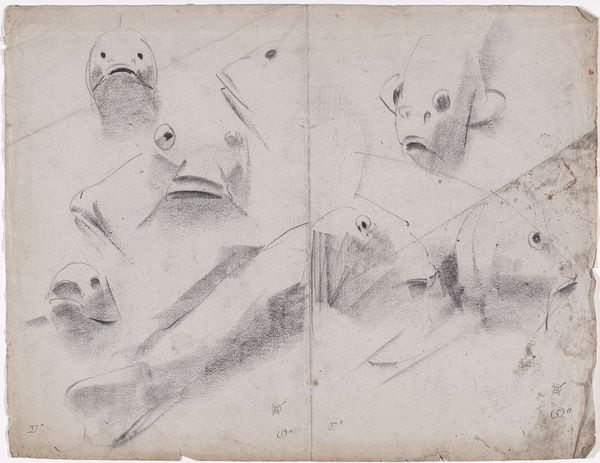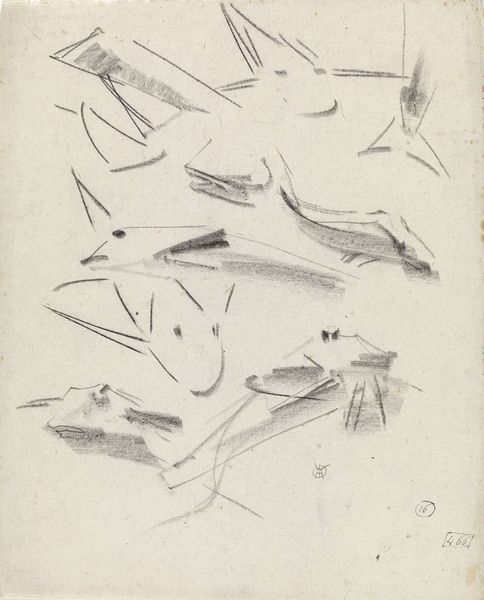
drawing, pencil
#
drawing
#
light pencil work
#
organic
#
quirky sketch
#
pencil sketch
#
figuration
#
personal sketchbook
#
sketchwork
#
ink drawing experimentation
#
sketch
#
pen-ink sketch
#
pencil
#
sketchbook drawing
#
storyboard and sketchbook work
#
sketchbook art
Dimensions: height 429 mm, width 348 mm
Copyright: Rijks Museum: Open Domain
Curator: Welcome to the Rijksmuseum. We’re standing before "Poon en detailstudies, met kleurnotities", or "Poon and Detail Studies, with Color Notes," by Gerrit Willem Dijsselhof. This pencil drawing dates from the period of 1876 to 1924. Editor: My first impression is one of aquatic ethereality. The pale graphite strokes evoke the feeling of fish suspended in a hazy underwater environment. The scales aren't present and the composition almost lacks substance, conveying lightness and perhaps, even uncertainty. Curator: Indeed. The sparseness emphasizes the formal aspects. Consider the repetitive use of lines to create shape and depth; Dijsselhof’s color annotations even become textual brushstrokes contributing to the drawing’s visual texture. The varying line weights indicate an artist experimenting with depth. Editor: Yet, this feels so much more than a simple study. Dijsselhof was part of the Dutch Symbolist movement, a time rife with questions of identity amidst societal shifts. This reminds us that even depictions of the natural world can speak to humanity’s attempt to see itself reflected in the natural order. Are these precise observational studies or a symbolic investigation into the self? Curator: An interesting point. Notice, however, how the seemingly random placement of figures creates a structured asymmetry. The negative space is just as crucial to the drawing as the pencil strokes; see how it dictates the flow of our eyes around the page? It invites active viewing by letting the gaze wander uninhibited. Editor: It’s also vital to see this artwork as part of Dijsselhof's wider engagement with Javanese art and culture, visible in his furniture designs and interiors. This suggests these studies are also a cultural meditation, perhaps influenced by his fascination with Eastern aesthetics and the perceived spiritual connection between humans and nature. This links to anxieties about industrialization, nature being more present within Eastern culture at the time. Curator: Ultimately, it's an exceptional study of form, space, and light. Editor: Yes, a visual poem connecting inner turmoil and shifting perspectives. It reminds us to find meaning in the incomplete and the quietly observed.
Comments
No comments
Be the first to comment and join the conversation on the ultimate creative platform.
